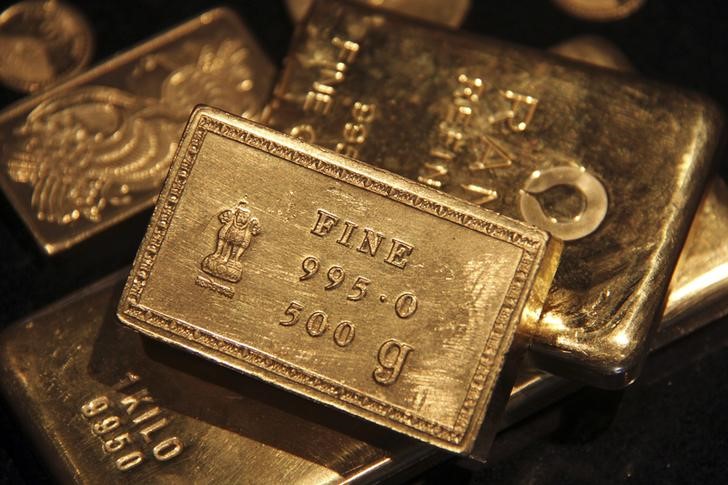By Barani Krishnan
Investing.com -- Gold futures came within a hair’s breadth of $1,950 an ounce before retreating on Thursday, as bulls in the game appeared to be conserving energy for another crack at the key resistance if U.S. inflation data due in the next 24 hours turns out to be tamer than thought.
Gold for February delivery on New York’s Comex was at $1,926.25 an ounce by 12:00 ET (17:00 GMT), down $16.35, or 0.8%, on the day. The session high was $1,949.70.
The spot price of gold, more closely followed than futures by some traders, was at $1,926.01 — down $20.21, or 1%, on the day. Spot gold peaked at $1,949.29 during the session.
The $1,950 resistance is a key test for gold’s ability to scale toward record highs above $2,000 an ounce, which it got to in April last year, almost reprising its all-time peak from August 2020. Since this year began, both futures and spot gold have gained more than 5% each.
Thursday’s pullback in gold was partly due to the better-than-expected U.S. GDP number for the fourth quarter of last year, released earlier on Thursday by the Commerce Department. Q4 gross domestic product expanded by an annualized 2.9%, down from the year-on-year expansion of 3.2% in the third quarter, but still higher than Wall Street economists’ forecasts for a 2.6% growth.
Stronger expectations for the U.S. economy are a negative for gold, which serves as a safe-haven against economic and political troubles.
But Thursday’s GDP data was also benign for gold in a sense as it suggested that the Federal Reserve’s aggressive rate hikes during last year did not do too much damage to the economy, and would likely encourage the central bank to slow down on its monetary tightening this year.
A slower pace of rate hikes would weigh on the dollar, helping gold to advance instead. The Dollar Index, which pits the greenback against six major currencies, including the euro and yen, has lost 9% since the end of September. For January itself, it is down 1.4%, though it showed a slight advance in Thursday’s trade.
“Gold is softening a bit as better-than-expected U.S. GDP data supports the argument that the Fed could still deliver a soft-landing” to the economy versus fears of a recession, said Ed Moya, analyst at online trading platform OANDA.
GDP aside, U.S. durable goods orders for December came in twice more than expected, with a 5.6% gain. Sales of new homes in the United States rose for a third straight month in December after the Fed slowed its rate hike for the first time last month after aggressive monetary tightening since June.
With Thursday’s U.S. economic data out of the way, attention was now on Friday’s scheduled release of the Personal Consumption Expenditures Index, which provides the latest update on the inflation situation in America.
While the Consumer Price Index, or CPI, is the broader inflation benchmark for America and the world, the so-called PCE Index happens to be the Fed’s preferred inflation gauge. That makes it just as important in deciding gold’s immediate direction.
The Fed particularly looks at the “core” component of the PCE data that presents a “cleaner” read on inflation by stripping out volatile food and energy prices. Wall Street economists have been fairly accurate with their forecasts on core year-on-year PCE growth. In October and November, their consensus was for a growth of 5.0% and 4.7% year-on-year, respectively — exactly what the Commerce Department reported. For the December data due on Thursday, the expectation is for a growth of 4.4%. If correct, it would be the lowest annual reading on core inflation since October 2021.
In a bid to control surging prices, the Fed added 425 basis points to U.S. interest rates since March via seven rate hikes. Prior to that, interest rates peaked at just 25 basis points, as the central bank slashed them to nearly zero after the global Covid-19 outbreak in 2020. The Fed, which executed four back-to-back jumbo rate hikes of 75 basis points from June through November, imposed a more modest 50-basis point increase}} in December.
For its next rate decision on Feb. 1, economists expect the central bank to announce an even smaller hike of 25 basis points. The last time the Fed announced a 25 basis-point increase was in March 2022, at the start of its current rate hike cycle.
